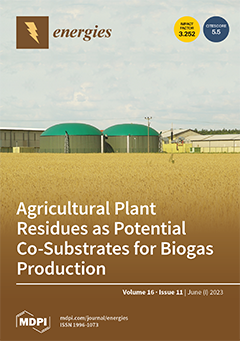High-pressure direct injection diesel/methanol dual-fuel engines exhibit excellent emission reduction potential, but they are still in the initial stage of research and development. The influences of different methanol injection locations, injection duration, and injection pressures on combustion characteristics, mixture homogeneity, and exhaust emissions
[...] Read more.
High-pressure direct injection diesel/methanol dual-fuel engines exhibit excellent emission reduction potential, but they are still in the initial stage of research and development. The influences of different methanol injection locations, injection duration, and injection pressures on combustion characteristics, mixture homogeneity, and exhaust emissions are investigated to explore appropriate injection strategies and further optimize the engine performance base using CONVERGE software. The results show that the impact of the methanol injection position on the engine is relatively small, especially on combustion characteristics. A larger axial nozzle distance contributes to the formation of the homogeneous mixture, improving the engine economy. However, the engine performance is remarkably affected by methanol injection duration and methanol injection pressure. A shorter combustion duration is achieved with a decrease in the methanol injection duration and an increase in the methanol injection pressure, as a result of which the fuel economy is improved, with the combustion process more concentrated near the top dead center. Simultaneously, the mixture homogeneity is enhanced, which is conducive to a reduction in soot and CO emissions, yet not to a NO
X and HC reduction. The lowest overall emissions of NO
X, soot, CO, and HC are achieved when the radial nozzle distance and axial nozzle distance are 2.5 mm and 0.5 mm, respectively. Besides, the combustion characteristics and emissions of the engine are affected significantly under different methanol injection locations and injection pressures. The increased injection interval leads to deteriorating combustion characteristics and economy, i.e., a delayed combustion phase (CA50), an extended ignition delay and combustion duration (CA10–CA90), thereby increasing CO and soot emissions, but decreasing NO
X emission. Additionally, the optimal economy and exhaust emissions are obtained when adopting an injection duration of 6 °CA and an injection pressure of 44.4 MPa. The ITE is increased in this case compared to the other injection strategies, thereby improving the engine performance significantly. The results provide parametric feedback and theoretical support for the design of high-pressure direct injection diesel/methanol dual-fuel engines from a time and space perspective, which has certain theoretical significance.
Full article





